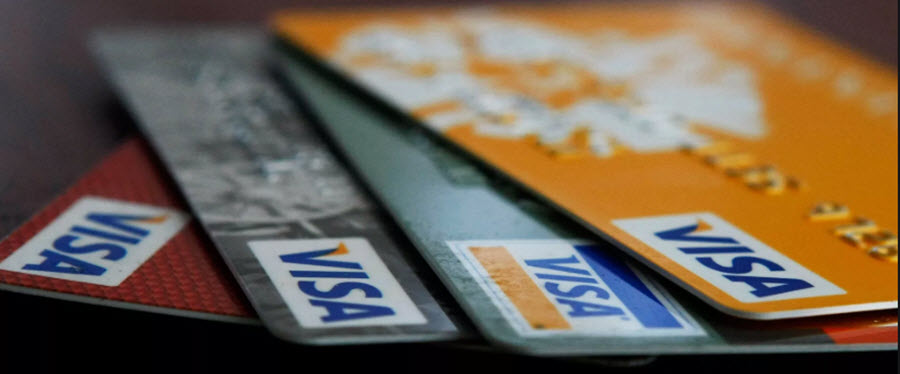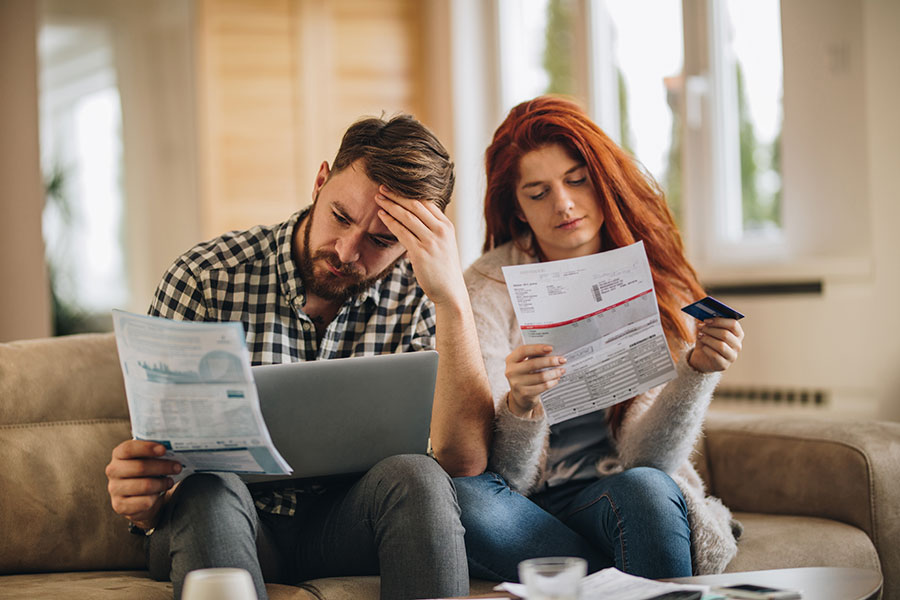Australians owe almost $45 billion in credit card debt, according to the Australian Securities & Investments Commission.
The average credit card balance is $3,258. If you plug that figure into a debt repayment calculator, you’ll see with 18% interest and 3% minimum payments, it’ll take about 14 years to pay it off. Total payments will be $6,214.18, almost double the original balance.
You probably don’t want to have debt like that hanging around. You might also want to avoid paying twice as much for everything you buy.
It’s easier to get a mortgage loan if your credit card balances are zero, and there are also things you can’t do or buy when you have big debts to pay.
11 Strategies to Help You Pay Off Credit Card Debt Fast
Whatever your motivation is for paying off your debts, here are 11 ways to pay off credit card debt fast.
Stop Using Your Cards!
This is an obvious one but also not a universal suggestion.
If you normally have trouble with impulse buying on credit, put the cards away.
But if your current debt situation is a result of unexpected events and you normally handle credit cards responsibly, there are advantages to continuing to use credit cards, which we’ll get to in the next item on the list.
Also, closing credit card accounts can hurt your credit score. This is especially true if those accounts are older and/or have high credit limits.
So it may be best to keep most accounts open, but hide the cards from yourself. Keep your credit cards active–or the issuer might close them for you. Pull them out once annually to buy a soda or some small item.
Get a Debt Consolidation Loan
If you’re being crushed by credit card debt, consolidation and refinancing might be worth a look.
With debt consolidation, you can combine debts into one monthly repayment and re-negotiate charges and interest on your debts, which can help you pay your debts off in an affordable manner.
Just be aware of some problems with debt consolidation loans.
For example, if the new loan stretches repayment out over a longer time, you might pay more interest, even if the new rate is lower. Do the math before taking out a new loan.
On the other hand, if you can get an interest rate lower than the average of the balances, it will pay off (even when including fees), and you have a definite plan to pay off the new loan quickly, it makes sense.
Use a Credit Card with No Balance for Normal Purchases
When you use a card with a balance, you pay interest on purchases from the day you make them.
But if you put normal purchases on a card, you pay in full every month, and you avoid new interest charges. You can then apply those savings to paying off the debt.
If you don’t have a paid-up card, pay off one of your cards first, so that you can use it.
In theory–if you can handle it–using a cash-back credit card can be better than paying cash. Use the cash rewards to help pay off your debt.
Budget More for Debt Repayment
Budget as much as you can toward debt repayment. Put money normally allocated to an emergency fund toward debt repayment, and find other ways to free up your money so that you can start paying off your debts.
Cut Expenses and Allocate More to Debt Repayment
One of the most powerful strategies you can use is to cut your expenses – then apply the savings toward debt repayment.
Consider cutting your expenses by $1,000 per month. Imagine how quickly you could knock down debt if you had an extra $12,000 per year to throw at it.
Make Extra Payments Using New Money
Cutting expenses can only go so far. Why not find new money to pay your debt?
Working an extra day on overtime every other week could bring in thousands of dollars annually. Consider finding a second job, or selling your services to make extra money.
In general, any unexpected or “extra” income should go toward your debt –including tax refunds or monetary gifts.
Sell everything you don’t use, and use the money you make to pay down balances.
Ask for Lower Interest Rates
You can convince credit card companies to lower your interest rates –if you ask the right way. It’s worth trying at least once for each credit card you have.
Knocking four interest percentage points off a $10,000 balance can save you hundreds of dollars in interest annually. Add those savings to your repayment plan!
Pay the Highest-Interest Debts First
Pay only the minimum required on every card, except the one with the highest interest rate.
If you put most of your debt repayment budget toward the balance with the highest interest rate, you’ll pay it off quickly. Then, do the same with whichever remaining card balance has the highest interest rate.
This formula helps you devote less money to interest and more money to paying off the debt –speeding up the process.
One exception is if all your cards have balances. In this case, you might want to pay off the smallest balance in order to have one card to use for normal purchases. Pay this card in full every month to avoid any new interest charges.
Make Two Payments per Month
Most credit card companies use an average daily balance to compute interest charges.
Instead of paying $400 toward a balance each month, make two payments of $200. You’ll lower the average daily balance, so you’ll pay less interest!
In theory, paying every week would help even more, if you’re able to.
Transfer Debt to Zero-Interest Cards
Transferring some–or all–of your debt to a card with a lower interest rate can make repayment much easier.
This is especially true if you find a card with no transfer fee and no interest for a year or more.
If you can, pay off the entire balance during the zero-interest period. If you can’t, watch for other zero-interest offers when the current one is almost over.
Get the Debt Reduced
Sometimes, you can convince a credit card company to forgive your debt–or at least a part of it.
If you’re in serious financial trouble, explain the situation to the card issuer. Offer to pay a portion of the balance owed as payment in full.
Get the agreement in writing–if the debt is simply written off as noncollectable (not paid-in-full), it can still be sold and collected later.
Beware: forgiven debt can be taxable as income.
In other words, if the credit card company agrees to take $2,000 as full payment on a $7,000 balance, you might have to pay taxes on the forgiven $5,000.
Putting It All Together
Any one of these strategies might be useful on its own, but use several to pay off your credit card debt as quickly as possible.
For example: get lower interest rates, make two monthly repayments, pay the highest-interest-rate balances first and allocate all new money and savings from reduced expenses toward debt repayment.
Accomplishing your goal of paying off your credit card debt can depend on your situation, debt level and commitment, but you can do it!
More from Budgeting
Tackle Debt with the Right Solution!
Everyones debt is different, get proven relief strategies to determine what is right for you.
Tell us about your debt

See what you could save

Take control of debt






